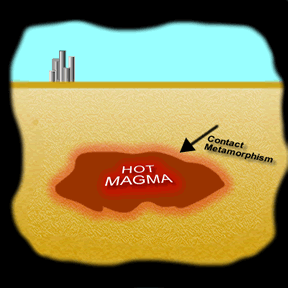Deep underground, zones of metamorphism form around the hot magma of batholiths.
L.Gardiner/Windows Original
Contact Metamorphism
Rocks become metamorphosed when they are close to hot molten rock. This is called contact metamorphism.
Contact metamorphism can either happen deep underground or at the surface of the Earth. Underground, hot magma changes the rocks that are near it. Above ground, lava erupting from a volcano changes the rock that it erupts onto. The amount of rock that is changed depends on how much magma there is.
Metamorphism of rocks over very large areas is called regional metamorphism.
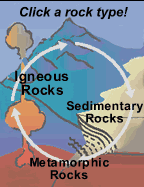
Last modified October 13, 2003 by Lisa Gardiner.
You might also be interested in:

Pretend that you are an explorer traveling to the center of the Earth. You would find that the deeper you travel, the hotter it gets! Beneath the crust, in the mantle layer, it is hot enough that rock
...more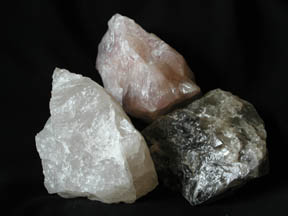
Spotting minerals is fun! There are many different types of minerals. Each has a different name and special traits. You can learn more about minerals by looking closely at them to understand their special
...more
This mineral is called quartz! Sometimes it looks white like milk but usually it looks clear like glass, sometimes with a little pink or gray tinge of color. You can find crystals of quartz in many different
...more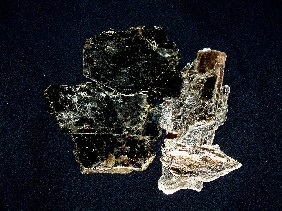
Mica minerals make some rocks sparkle! Look for them in your igneous and metamorphic rocks. Do they make your rocks sparkle? They break into flat plates because they have cleavage.
...more
This is a feldspar mineral! Look for it in igneous rocks where it looks like white or pink crystals. You might find it in other types of rocks as well.
...more
The mineral that is green is called olivine! Look for it in igneous and metamorphic rocks. In this picture, olivine is filling a hole in the igneous rock.
...more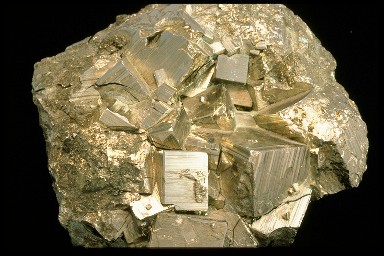
There are at least 2000 minerals on Earth. That's a lot of minerals! But you don't need to know all of them to spot the minerals lurking in the rocks of your backyard. That is because only a small number
...more
